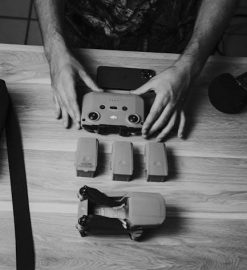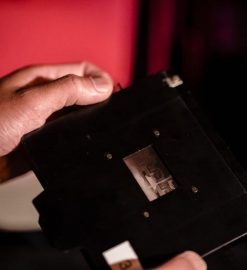manual scrobbler

Manual scrobbling involves manually entering song details to track music listening habits, offering precision for formats like vinyl or when automated tools fall short.
What is a Manual Scrobbler?
A manual scrobbler is a tool or method used to manually log and track music listening habits, particularly for formats like vinyl or radio, where automatic scrobbling isn’t possible. It allows users to manually enter song details, such as artist, track, and album, ensuring accurate metadata entry. This process is essential for maintaining a precise listening history, especially for those who consume music offline or through non-digital platforms. Manual scrobblers provide greater control and flexibility, enabling users to curate their music data meticulously and integrate it with platforms like Last.fm or MusicBrainz for comprehensive analytics.
Historical Context of Scrobbling
Scrobbling emerged in the early 2000s as a method to track music listening habits, initially requiring manual entry of song details like artist and track names. Early users relied on tools like CD barcode scanners to log their listens, which, while cumbersome, laid the groundwork for modern platforms like Last.fm. Over time, automated scrobbling became prevalent, but manual methods persisted, especially for formats like vinyl or radio, where automated tools couldn’t capture data. This historical evolution highlights the enduring need for precise tracking of music consumption, even as technology advanced.
Why Manual Scrobbling is Still Relevant
Manual scrobbling remains essential for music enthusiasts who value accuracy and control over their listening data. While automated tools are convenient, they often fail with offline formats like vinyl or radio. Additionally, manual entry ensures that metadata, such as correct artist names and track lengths, is precise, which is crucial for maintaining detailed and accurate listening statistics. This method also caters to those who prefer a more personal and deliberate way of tracking their music habits, ensuring that every listen is accounted for without relying on technology. Thus, manual scrobbling bridges gaps left by automation, preserving data integrity and personalization.

How Manual Scrobbling Works
Manual scrobbling involves entering song details like artist, track, and album into a platform or tool, often with timestamping for accuracy. Each entry is recorded manually.
Basic Requirements for Scrobbling
Manual scrobbling requires accurate metadata, including artist, track, and album names. Tracks must play for at least 240 seconds or reach halftime. A track length of 30 seconds or more is necessary. Users need a compatible tool or platform to input data manually. Internet access is essential for uploading scrobbles. A user account on platforms like Last.fm is typically required. Ensure all details are correct to maintain accurate listening statistics. These requirements ensure consistency and reliability in tracking music playback manually.
Step-by-Step Guide to Manual Scrobbling
Open your chosen scrobbling tool or platform.
Locate the manual entry section.
Enter the artist name, track title, and album details accurately.
Ensure the track duration meets the minimum requirement of 30 seconds.
Verify that the track plays for at least 240 seconds or reaches its halfway point.
Submit the scrobble to update your listening history.
Repeat for additional tracks as needed.
This process ensures precise tracking of your music listening habits.
Importance of Accurate Metadata
Accurate metadata is crucial for manual scrobbling, as it ensures your music listening data is recorded correctly. Correct artist names, track titles, and albums are essential for proper tracking and analysis. Inaccurate metadata can lead to misattributed plays or duplicated entries, skewing your listening statistics. Additionally, platforms like Last.fm use metadata to generate recommendations and connect users with similar tastes. Ensuring metadata accuracy maintains data integrity and enhances personal analytics, making it vital for a seamless scrobbling experience. Properly formatted metadata also aids in automatic corrections, reducing errors and improving overall user experience;

Popular Tools for Manual Scrobbling
Popular tools like Open Scrobbler and Last.fm-Scrobbler simplify manual scrobbling by allowing users to log tracks from various sources. These tools support bulk imports and ensure accurate metadata entry. Additionally, third-party apps and scripts offer customization for advanced users seeking tailored solutions.
Open Scrobbler: Features and Functionality

Open Scrobbler is a versatile tool designed for manual music tracking, enabling users to log songs and albums from sources like radio, vinyl, or live events. It supports individual track entries with timestamps, ensuring precise logging. The platform is user-friendly, accommodating both casual listeners and metadata enthusiasts. Open Scrobbler also allows batch imports for multiple tracks, streamlining the process for extensive libraries. Its compatibility with various music platforms and local libraries makes it a flexible choice for maintaining accurate listening histories. Additionally, it offers customization options, enhancing functionality for advanced users seeking tailored solutions.
Last.fm-Scrobbler: Overview and Benefits
Last.fm-Scrobbler is a powerful tool for manually logging music listens, enabling users to import various text file formats and convert them into scrobbles. It seamlessly integrates with Last.fm, enhancing the music tracking experience by allowing users to log songs from CDs, vinyl, or other sources that automated tools might miss. This tool is particularly beneficial for music enthusiasts who value precision and control over their listening data. Last.fm-Scrobbler supports both individual track entries and bulk imports, making it efficient for managing extensive music libraries. Its customization options also cater to advanced users seeking tailored solutions.
Third-Party Apps and Scripts
Third-party apps and scripts expand the functionality of manual scrobbling, offering tailored solutions for unique needs. Tools like pylast, a Python library, enable developers to create custom scripts for interacting with Last.fm’s API, automating metadata entry and scrobbling processes. Additionally, apps such as EMMS (Emacs Multi-Media System) provide integrated support for manual scrobbling within media management workflows. These tools cater to advanced users seeking to enhance their music tracking experience with custom scripts and workflows, ensuring precise control over their listening data and integration with various platforms. This flexibility makes third-party solutions indispensable for power users.

Integration with Music Platforms
Manual scrobblers seamlessly integrate with platforms like Last.fm and MusicBrainz, enhancing music libraries by syncing listening data and improving metadata accuracy for a richer user experience.
Last.fm Integration
Last.fm integration is a cornerstone of manual scrobbling, enabling users to upload listening data directly to their profiles. Tools like Open Scrobbler and Last.fm-Scrobbler facilitate this process, allowing users to import text files containing track details. These tools ensure accurate scrobbling, even for offline or non-digital formats like vinyl. Last.fm’s API support, such as through pylast, further enhances customization and automation. With proper integration, users can maintain detailed listening histories, enjoy personalized recommendations, and share music insights with the Last.fm community, making it a vital component of the manual scrobbling ecosystem.
MusicBrainz and Metadata Management
MusicBrainz serves as a comprehensive music metadata database, aiding in accurate track identification and organization. While not primarily a search engine, it provides detailed information on artists, albums, and tracks, which is essential for manual scrobbling. By integrating MusicBrainz data, tools like Open Scrobbler ensure precise metadata entry, reducing errors when scrobbling tracks from vinyl or radio. This seamless metadata management enhances the scrobbling process, ensuring accurate listening histories and improving music recommendations. MusicBrainz’s robust database is a cornerstone for maintaining high-quality metadata in manual scrobbling workflows.
Compatibility with Local Music Libraries
Manual scrobblers seamlessly integrate with local music libraries, allowing users to organize and track their music collections effectively. Tools like Open Scrobbler and Last.fm-Scrobbler enable users to scrobble tracks directly from their libraries, ensuring accurate metadata and seamless syncing. These tools often support various file formats and provide features for browsing track metadata, enhancing the overall listening experience. By bridging the gap between local libraries and online platforms, manual scrobblers offer a comprehensive solution for music enthusiasts to manage and share their listening habits effortlessly. This integration is crucial for maintaining organized and precise music libraries.

Advanced Techniques
Advanced techniques include batch scrobbling, API integration, and custom scripting to streamline metadata entry and enhance functionality for precise music tracking and organization.
Batch Scrobbling for Multiple Tracks
Batch scrobbling allows users to upload multiple tracks at once, saving time and effort. Tools like Last;fm-Scrobbler support importing text files with track details, enabling bulk submissions. This method is ideal for vinyl collections or playlists, ensuring all listens are recorded accurately. By automating the process, users maintain comprehensive listening histories without manual entry for each song. This feature is particularly useful for music enthusiasts with large libraries, ensuring their data remains consistent and up-to-date across platforms. Batch scrobbling enhances efficiency, making it a cornerstone of advanced manual scrobbling techniques.
Using APIs for Automated Metadata Entry
APIs simplify manual scrobbling by automating metadata entry. Tools like pylast and Last.fm-Scrobbler interact with APIs to fetch track details, reducing manual input. This method ensures accuracy by pulling data from databases like MusicBrainz. By automating metadata retrieval, users save time and minimize errors. APIs also enable batch processing, making it efficient to scrobble multiple tracks. This approach is ideal for users with large music libraries, ensuring their listening data is consistently updated across platforms. Automated metadata entry enhances the scrobbling experience, offering a seamless way to track music habits without manual effort.
Custom Scripts for Enhanced Functionality
Custom scripts enhance manual scrobbling by automating repetitive tasks. Users can create scripts to handle batch scrobbling, metadata formatting, or integration with music platforms. Tools like Python or bash scripts allow for tailored workflows. For example, scripts can parse text files, extract track details, and submit them to Last;fm. This functionality is particularly useful for users with unique music libraries or specific scrobbling needs. By leveraging APIs and custom logic, scripts streamline the scrobbling process, making it more efficient and adaptable to individual preferences. This approach is ideal for advanced users seeking precision and control over their music tracking.

Case Studies and User Experiences
Users share experiences of manually scrobbling vinyl tracks, leveraging tools like Open Scrobbler for accuracy. Community tips highlight efficient methods for tracking listens across platforms.
Real-World Applications of Manual Scrobbling
Manual scrobbling is widely used for tracking vinyl records, CDs, and radio plays. It’s ideal for music enthusiasts who want precise listening data when automatic tools aren’t feasible. Users often employ it to log tracks from live events or physical media, ensuring their listening history remains accurate. Additionally, manual scrobbling helps maintain consistent metadata across platforms, enhancing music recommendations and personal analytics. Many integrate this method with tools like Open Scrobbler and Last.fm-Scrobbler to seamlessly update their libraries and share insights within music communities.
Community Tips and Tricks
Community members often share tips for improving manual scrobbling efficiency. Many recommend organizing track details in spreadsheets before uploading to ensure accuracy. Others suggest using bulk upload features in tools like Open Scrobbler for multiple tracks. Regular backups of scrobble data are advised to prevent loss. Users also emphasize the importance of verifying metadata before submission to maintain consistency. These practices help streamline the process and enhance the overall listening history experience for music enthusiasts.
Manual scrobbling remains a vital tool for music enthusiasts, offering precise tracking of listening habits and enhancing music discovery through detailed data entry and community-driven insights.
Future of Manual Scrobbling
The future of manual scrobbling lies in integration with modern platforms and tools, enhancing user convenience while maintaining precision. Tools like Open Scrobbler and Last.fm-Scrobbler continue to evolve, offering streamlined interfaces and compatibility with emerging technologies. APIs and automated metadata entry will play a larger role, reducing manual effort while preserving accuracy. As music platforms expand, manual scrobbling will remain a niche but vital practice, especially for vinyl and offline listening. Community-driven improvements and open-source contributions ensure its relevance, keeping manual scrobbling a beloved method for dedicated music enthusiasts.
Final Thoughts on Manual Scrobbler Tools
Manual scrobbling tools remain indispensable for music enthusiasts seeking precise control over their listening data. Despite automation, tools like Open Scrobbler and Last.fm-Scrobbler offer unique value, especially for vinyl and offline listening. Their adaptability to new platforms and metadata standards ensures longevity. APIs and custom scripts enhance functionality, catering to both casual and advanced users. While automated solutions dominate, manual scrobbling tools provide a niche yet vital service, supported by dedicated communities. Their enduring popularity underscores the importance of personalization and accuracy in music tracking, making them timeless companions for passionate listeners.



Leave a Reply
You must be logged in to post a comment.